While converting new customers is critical for business growth, the cost of acquisition can be 5-7 times greater than the cost of retention. Moreover, a mere 5% boost in retention rates can drive profit increases of 25% to 95%.
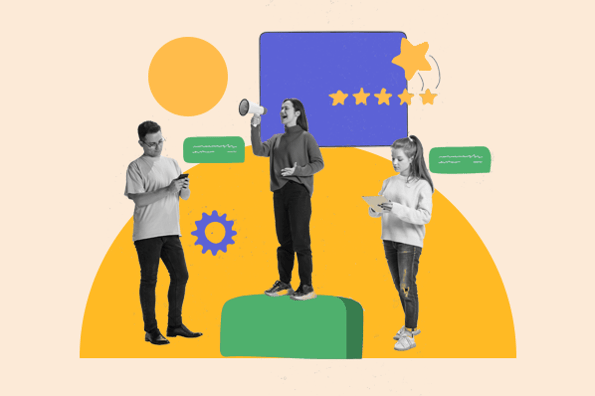
But retention doesn't tell the whole story. Loyalty also plays a role in revenue; loyal customers are more likely to engage with your brand on social media, recommend your products to friends and family, and purchase new product offerings.
In this piece, we'll explore the differences between customer retention and loyalty, dive into customer retention rates, and offer 13 ways to improve both metrics.
Table of Contents
- What is customer retention?
- How to Calculate Customer Retention Rate
- What is customer loyalty?
- The Alignment of Customer Loyalty and Customer Retention
- 13 Ways to Improve Customer Loyalty and Retention
What is customer retention?
Customer retention measures how many customers continue to purchase your products or use your services over a set period. The higher the number, the higher your customer retention rate.
Retaining customers means more returning business, which means more purchases without the need to guide customers through the funnel from interest to engagement to conversion.
How to Measure Customer Retention
There are multiple ways to measure customer retention. Here are four key metrics worth tracking.
Customer Churn

Customer churn refers to the number of customers that stop buying products from your company over a set period, such as a year.
While some churn is expected as your business grows and evolves, churn rates of more than 5-7% may indicate a larger issue.
Keeping track of your churn rate will allow you to measure how many customers are dissatisfied with your product or service, and you can take steps to lower that number if you find out why customers are churning.
Existing Customer Revenue Growth Rate

Existing customers typically account for 60% to 70% of sales. As a result, it's critical to measure revenue growth (or decline) to evaluate the impact of current marketing and sales efforts.
Doing so will give you a good idea of how much revenue new versus returning customers are providing.
Product Return Rate

Returned products are part of business operations — products may be damaged in transit or fail unexpectedly.
If product return rates are rapidly increasing, however, it may suggest a more fundamental problem that needs to be addressed.
The sooner companies identify an issue, the sooner they can remedy the issue and limit the impact on retention.
Customer Retention Rate

The customer retention rate (CRR) measures the number of customers you've kept over a certain period. This metric helps evaluate the success of your retention strategy.
For example, if your total number of customers is up at the end of the measurement period, but the vast majority of these customers are new, it could speak to a problem with retention.
How to Calculate Customer Retention Rate
Calculating your retention rate (CRR) is relatively straightforward.
- Determine the period that you're going to measure. This could be a year, a quarter, a month, etc.
- Calculate the total number of customers you had at the start of the period. These are customers who have purchased from you in the past and are familiar with your brand.
- Calculate the total number of customers you had at the end of the time period. We'll eventually divide this by the starting number to get our retention rate, but we must first account for new customers gained during this period.
- Subtract the number of net new customers gained. You don't want to skew your retention numbers with newly acquired customers, so subtract the number of new customers from the number of customers we had at the end of the time period.
- Divide the total number of customers at the end of the period by the number of customers we had at the start. This will give us a result that we can multiply by 100% to determine our customer retention rate.
Let's say you had 100 customers at the start of the year and earned 20 new customers. You also lost 10 customers by the end of the year. Your customer retention rate would be 90%.
Customer Retention Rate Formula
Here's what this formula looks like:

Once you know your customer retention rate, you should audit lost customers to determine similarities in reasons for leaving. This can help you find the types of customers that churn.
Consider if you can add more qualifying questions to your sales process or revise your buyer persona to better reflect the attributes of loyal, returning customers.
And, that's an important distinction to make, too. While intertwined with one another, customer retention is quite different from customer loyalty. Let's explore those differences.
What is customer loyalty?
Customer loyalty, also called brand loyalty, goes beyond basic buying numbers to address the larger relationship that customers have with your brand.
For example, loyal customers don't just come back — they often spend more money. They don't simply buy your products — they offer referrals and testimonials and speak highly of your company to friends and family.
They're also more willing to engage with your business on social media, in turn raising your brand's profile.
In other words, customer retention speaks to reliable revenue. Customer loyalty creates opportunities for growth.
How to Measure Customer Loyalty
Metrics used to measure customer loyalty include:
Time Between Purchases

The smaller the amount of time between customer purchases, the better for customer loyalty. Regular repeat purchases indicate that customers prefer your brand to the alternatives.
There are situations, however, where increasing time between purchases doesn't indicate an issue.
For example, if you're selling a well-made, high-quality product, customers may not need regular replacements. As a result, this metric is best combined with other loyalty measurements to determine overall sentiment.
Customer Lifetime Value (CLV)

CLV measures how much revenue a single customer generates over the average customer lifespan. The higher this value, the more customers are willing to spend with your business, indicating an uptick in loyalty.
Net Promoter Score (NPS)

This metric measures both how satisfied customers are with your business and how likely they are to recommend or refer your business.
To measure this value, ask your customers a simple question: On a scale of 1-10, how likely are you to recommend our company?
Scores of 9 and 10 are "promoters" — customers who actively promote your brand. Scores of 8 and 7 are neutral, and anything under 6 is considered a detractor.
The higher your NPS, the more loyal your customer base and the more willing they are to sing your praises.
Customer Satisfaction Score (CSAT)
CSAT measures customer satisfaction with a recent purchase or interaction, such as customer service.
The most familiar form of CSAT collection is post-interaction surveys: Businesses ask customers to rate their satisfaction with the interaction or purchase on a scale — this scale could be 1-3, 1-5, 1-10, or whatever works for your business.
The higher your CSAT score, the more satisfied and loyal your customers.
The Alignment of Customer Loyalty and Customer Retention
While it's important to make the distinction between the two, it's also important to acknowledge how they're intertwined. In fact, improving customer retention starts with improving customer loyalty.
Think of it this way: Retention measures the transaction. Your customers bought from you at a rate you're happy with, or they didn't. In essence, the focus is on maintaining revenue (and, in effect, preventing lost revenue).
Customer loyalty measures what happens before the transaction. Are you identifying what makes unhappy customers so that you can prevent future customers from becoming unhappy?
Are you turning satisfied customers into promoters who buy from you again and also spread the word so that others buy from you too?
With this in mind, improving customer loyalty also improves customer retention. But it doesn't stop there. Customer loyalty isn't just about maintaining revenue or preventing lost revenue; customer loyalty is about growth.
Now that we've established a strong baseline on customer retention and loyalty, let's explain how you can improve these metrics.
13 Ways to Improve Customer Loyalty and Retention
1. Highlight case studies during the sales process.
A significant portion of the sales process should be focused on determining if your product or service is the right fit — from both a relationship standpoint and how you will work together.
Share case studies that show exactly how your product or services helped other customers — and how they felt about working with your team. You could also share testimonials from previous customers.
It's similar to research before any big buying decision. You want to know if and how it will work before you purchase.
If the customer truly understands this, they will be more likely to have properly set expectations and be happier with the experience once they sign on the dotted line.
Natalia Mrazova from CloudTalk shares how to approach a truly well-crafted case study: "Customers seek authenticity.
They best relate to believable real-life experiences. I recommend putting clients' success in the spotlight, and use your product as a story behind that success."
Natalia Mrazova especially emphasizes the storytelling aspect. "According to Nutcracker, 55% of customers are likely to buy a product if they love its narrative.
So, a case study based on a captivating success story is a great step toward customer satisfaction. You boost loyalty simply by providing clients with an engaging way to make an informed decision."
If the customer truly understands the product or service, they will be more likely to have properly set expectations and be happier with the experience after their purchase.
2. Set expectations early and often.
If you don't set expectations and communicate these clearly, customers can easily become upset.
They might believe you can immediately deliver on X results, while in reality, those results are only seen after months of investing time and resources.
Understanding these points of view and communicating progress towards goals, what's included in purchases, your communication style, etc., is essential for making sure expectations are met.
This, in turn, will keep customers happy with the relationship for longer.
3. Communicate results on a regular basis.
Customers are more likely to continue purchasing from you if your product or service is delivering results and ROI.
If a customer can point to the fact that your product has influenced their goals and results, then it will be much more difficult for the customer to churn and say goodbye.
That means you need a good system for tracking and reporting on the metrics that really matter to the customer, which should relate to the goals you established together.
Be transparent about the results you've seen, where you see opportunities for improvements, and what you will work on next month.
4. Create a roadmap for the future of the relationship.
Many people compare the customer relationship with the customer success manager (CSM) to dating — and this isn't that far off.
And it's especially true when you consider the lifecycle of dating.
At some point, one person in the relationship wants to know that this is "going somewhere." He, she, or they want to know what the "plan" for the future looks like.
This desire to know that you are working toward a "next step" can also be applied to business relationships.
CSMs should create and revise a relationship roadmap on a regular basis. Build in steps for new milestones and goals. Both parties should be able to look forward and be excited about the current and next stages of the relationship.
5. Make memories around your shared successes.
According to research, people remember negative events more vividly than positive ones. They're also more likely to share poor experiences online than good ones.
Even if there are more positive events overall, the bad occurrences may be the longest-lasting memories.
So, CSMs need to consider how they can create better, more memorable experiences around positives and successes.
When something negative occurs — if there's a product outage or missed goal, for example — your team likely overly communicates, discusses plans for fixing the issue, apologizes, etc.
But when something truly great happens, how much of an emphasis do you place on the event?
For more ideas regarding increasing loyalty through customer marketing, check out the podcast below.
6. Ask for feedback and act on this information.
You can't improve customer retention without first understanding why your customers churn. Once you know the reasons and the correlating signs, you can work to prevent and reduce customer churn by proactively dealing with issues.
Ask for regular customer feedback from the entire team, including the decision-maker. Being able to identify and address these issues as early as possible will help you to prevent customers from leaving you.
Whether you use a customer survey in an email, after a transaction, or one-off, surveying customers and doing it regularly will help you identify trends and proactively solve problems — before customers leave you for your competitors.
7. Map out a consistent customer experience.
Consistency builds trust with customers. They know what to expect and can rely on you to get the work done and help deliver the results they need.
Without this, most interactions are a surprise, and in reality, nobody really likes surprises in a business setting.
Build out processes for onboarding new customers and kickoff phone calls and meetings. Make your web assets and social media channels consistent so customers can get the help they need across a variety of channels.
And plan out a schedule for future check-ins and milestones so you both have your eye on the same goals and shared responsibilities.
Having a process for each of these activities will make you more efficient, and the customer will have insight into what needs to be done and when. You can save the surprises for when you share the great results of the project.
8. Make it easy to get service.
No one wants to wait on hold. This was true when waiting on hold was invented, and it's even more true now.
Providing service in a way that increases customer retention and loyalty starts with understanding what today's customers need, which comes down to getting their questions answered and problems solved:
- Quickly
- Empathetically
- Conveniently
You can do this by making service easily accessible and on the channels that they prefer. Check out our article on building an omnichannel experience.
9. Keep a record of communication and any past problems.
Your company's culture, leadership, and business practices all contribute to retention.
But another way to prevent disruption in changes in personnel is by adopting a CRM system where you can store notes from meetings and phone calls, ongoing issues, personal preferences of the customers, etc.
With detailed notes and a complete history of the relationship recorded, a new account manager or point of contact will be ready to be a true business partner for you much more quickly — or vice versa, on the customer's side.
10. Remove friction where you find it.
According to Brian Halligan during his INBOUND speech, "Dollars flow where the friction is low."
As you keep track of the common themes that run through customer support inquiries, it's important to take action on them... and not just on a case-by-case basis.
The customer experience is key to loyalty, so by removing the "friction" to make a more streamlined process, you're solving for the customer and investing in customer retention.
This is especially important when the customer experience is an area where you're being measured against your competitors.
11. Exceed expectations.
It's one thing to satisfy your customers. It's another thing to create the kind of customer delight that they'll rave about. Make sure you're continually asking:
- What do our customers expect from us?
- What do our customers expect from this industry?
- What precedent is our competition setting?
- How can we not only meet these expectations but exceed them?
Customers don't form opinions in a vacuum, so be sure to continually evaluate your performance in this area.
12. Use reciprocity to increase loyalty.
Reciprocity is a social construct that has been found to increase loyalty. Acts of kindness create a feeling of obligation in the person who instinctively wants to repay the kindness.
There are two kinds of reciprocity: surprise and trumpeted. Both of these can be used in customer service to increase loyalty.
Surprise reciprocity is a surprise gift or gesture. An example of this would be when you send your customer free swag or tickets to a company event without warning.
Trumpeted reciprocity is when the person giving or doing something beneficial does so in a way that reveals that they are going above and beyond.
It doesn't mean you document and put all the great things you do in a monthly report, but it is obvious to the customer that what you are doing is outside the normal scope of the working relationship.
An example of this would be giving your customer early access to a new product or feature.
13. Invest in customer service tools.
If you want to create a delightful customer experience, your team needs to be well-equipped to do so. Having the right tools at your disposal not only creates convenience for your employees but for customers as well.
For example, knowledge management software can keep your teams connected during urgent or complicated customer issues. If a sales rep needs to contact a service agent, they can communicate in real time.
They don't have to put a customer on hold or set up an additional meeting to troubleshoot a minor problem. This makes your team more versatile and keeps customers happy throughout the purchasing experience.
Back For More: Balancing Loyalty and Retention
Customer retention helps drive steady sales but isn't enough on its own.
Loyalty plays a key role in the frequency and total value of current customer transactions — engaged and satisfied customers are more likely to purchase more often and recommend your brand to friends and family.
Bottom line? Understanding, measuring, and improving both loyalty and retention is key to business success.
Editor's note: This post was originally published in November 2019 and has been updated for comprehensiveness.

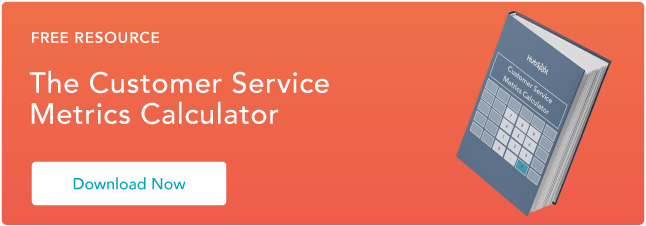
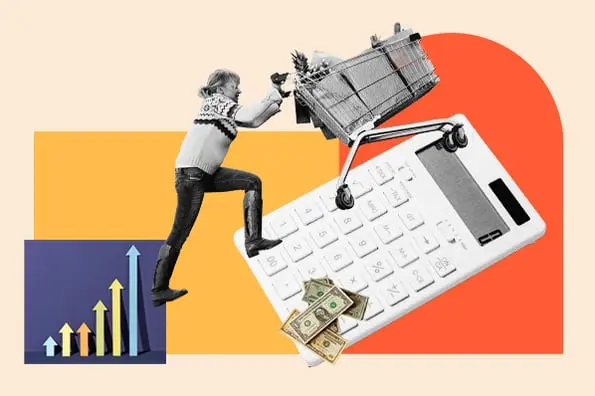

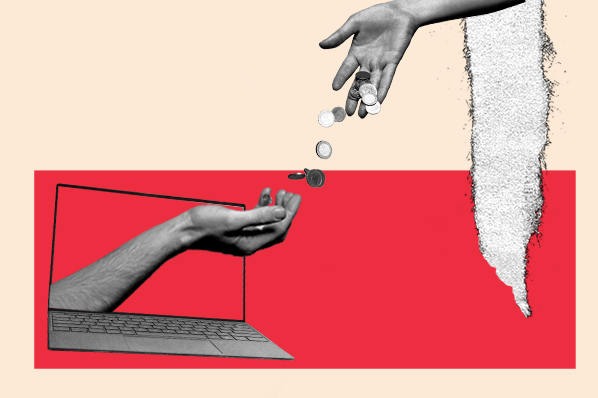


![Big Brands That Lost Customers' Satisfaction in 2023 [Where CX Went Wrong + Data]](https://www.hubspot.com/hubfs/companies%20that%20lost%20customers_featured.png)
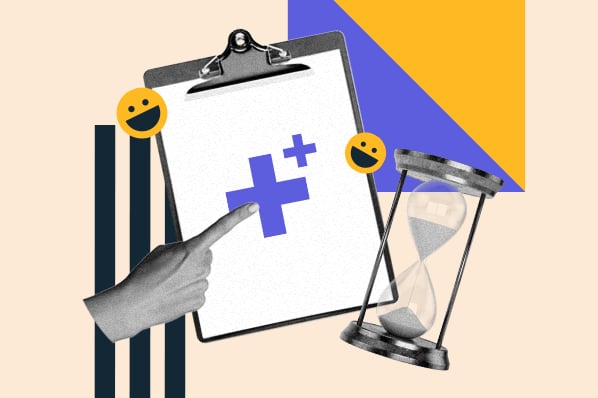
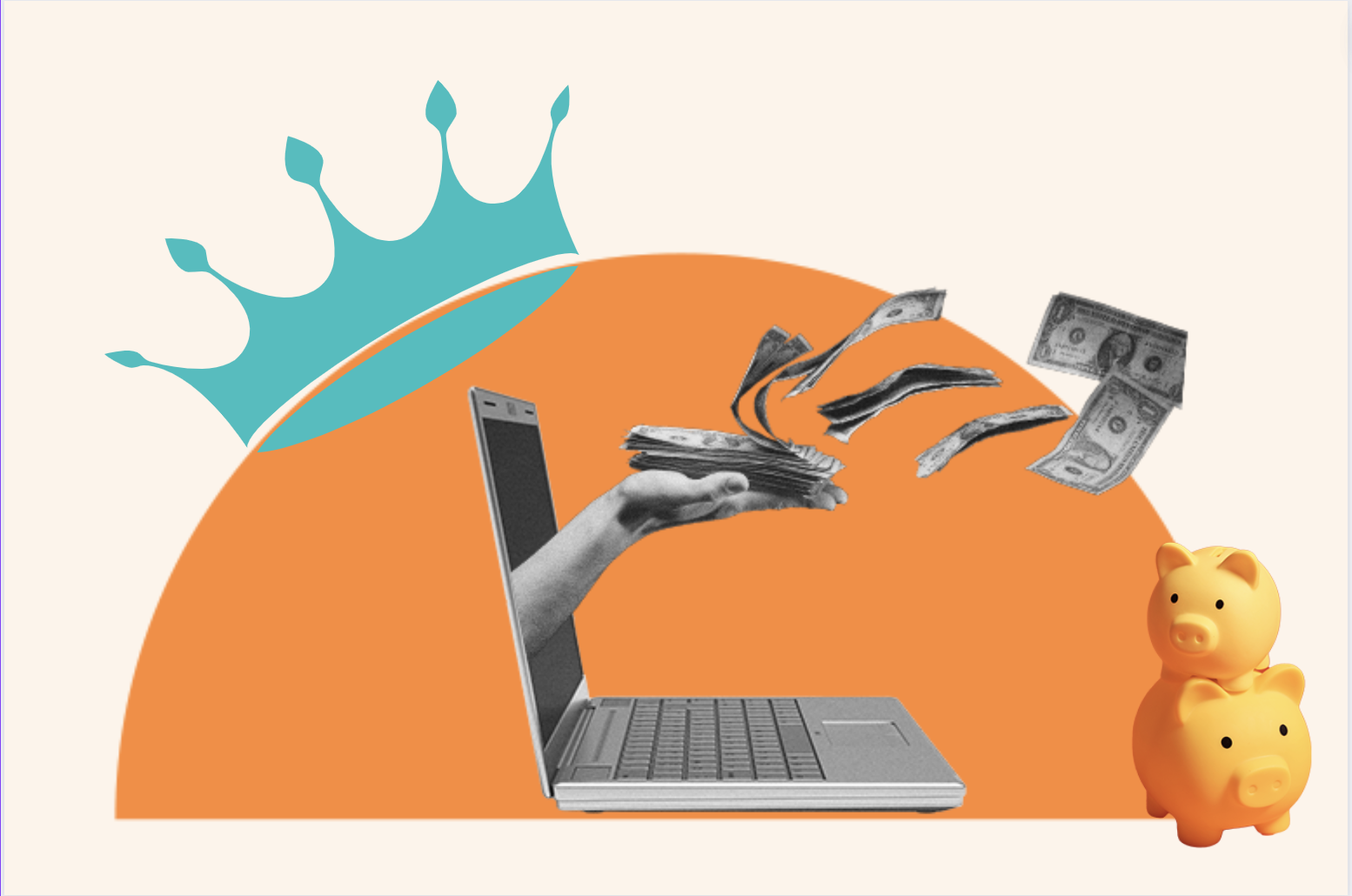

![How to Calculate Churn Rate in 5 Easy Steps [Definition + Formula]](https://knowledge.hubspot.com/hubfs/ai%20customer%20service%20predictions%20%283%29.webp)